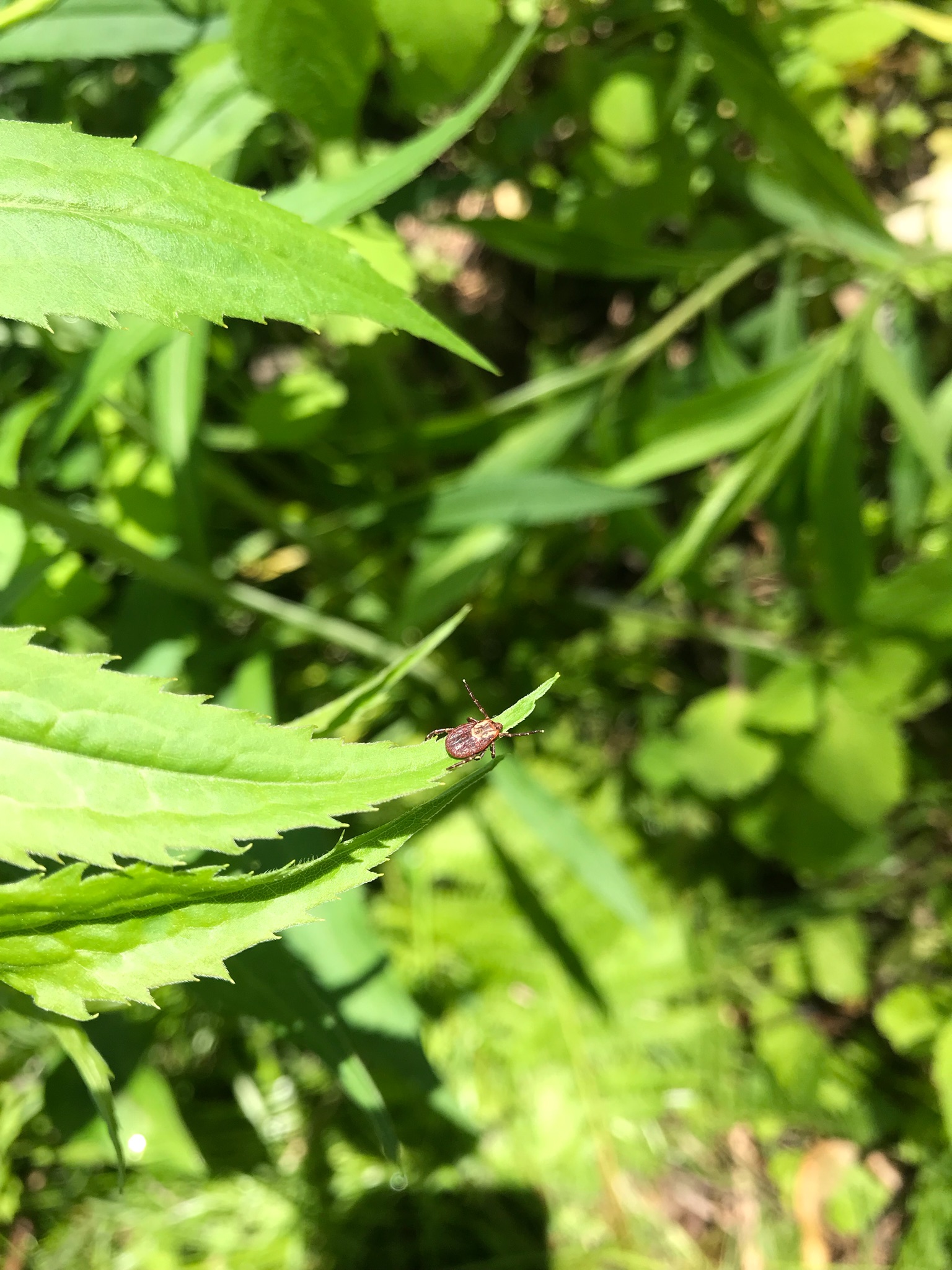Ixodes scapularis is the main vector for Borrelia burgdorferi which is the causative agent of Lyme disease. Ixodes scapularis is primarily known as a woodland-associated tick, due to its natural habitat. Ixodes scapularis ticks have a 2-3 year life cycle that consist of four life stages.
Stage 0: Mating – Mating occurs while the adult female ticks are taking a blood meal from a host. Male ticks insert their hypostome and chelicerae into the female’s genital opening and transfer spermatophores. Males can stay attached to the female throughout the 6-11 day feeding time frame. Male ticks do not take blood meals after their second stage (nymphs). Their life-cycle generally revolves around mating with females, as after mating they will die.
Stage 1: Egg – After 14 days, multicellular eggs are expelled from the genital opening of the female. The eggs pass over the capitulum where they are coated with wax. This wax protects the eggs from drying and also binds them together into a mass. After 35 days the eggs embryonate, the body and legs of the nymph are formed. Over the next 14 days the larval will mature. Larvae seek out small hosts to whom they attach, and feed for the next 6 days. Afterwards, they drop off to molt into leaf litter to molt into their next life-stage.
Stage 2: Larva – Larval and nymphal ticks must take a blood meal before they are able to molt into the next life stage. During this process, they may acquire dangerous pathogens, through host choice, or through co-feeding transmission. Co-feeding transmission occurs when an uninfected and infected tick feeds on the same host in close proximity. Larvae and nymphs normally feed on smaller mammals, which may include chipmunks, white-footed mice, birds, lizards, and sometimes even deer.
Stage 3: Nymph – Nymphs emerge from larvae in roughly 28 days, however, many nymphs fail to complete the molting process and die. Peak nymph activity is highly correlated with months May, June, and July. Nymphs are considered highly dangerous due to their incredibly small size which allows them to remain incognito on various parts of a host’s body. The longer a tick remains attached to a host, the higher the chance of transmission occurring.
Stage 4: Adult – Within 4-5 weeks nymphal ticks molt into the adult, and final stages of their life-cycle. Molting is a slow process and during this time the emerging adult ticks breathe through tubes that connect the spiracles with the exoskeleton. Adult female ticks feed on larger mammals, such as deer, humans, pets, etc. They lay a large batch of eggs, and die. Adult ticks are active specifically in the fall and spring months, however, they can show just as much activity in some of the winter months. Climbing temperatures throughout winters can create very habitable environments for ticks. As long as daytime temperatures stay above freezing and there is little snow covering the ground, tick activity can proceed as normal. Although adult female ticks may lay eggs towards the end of spring, their offspring will not begin to seek out hosts until months later.
References:
https://www.ncbi.nlm.nih.gov/pmc/articles/PMC4650338/#MOESM1

